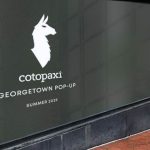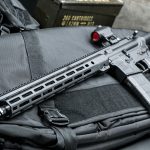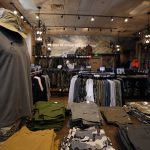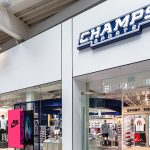Quiksilver, Inc. reported that revenues grew 2 percent to $512.4 million in the third quarter ended July 31, 2012, as a successful back-to-school launch of DC footwear and apparel into mid-tier department stores in the U.S. and growing sales in new Asian markets barely offset declines in Europe.
Speaking in his 100th quarterly earnings call, Chairman, CEO and President Bob McKnight, said the BTS season has been marked by favorable weather, good margins and leaner inventories. The one weakness was women’s swimwear. Sales attributable to DC’s BTS launch were ahead of plan.
“It was great for DC,” said McKnight.
Quik’s revenues grew 8 percent in currency-neutral (c-n) terms; increasing across all three brands, all three regions, and all three distribution channels compared with the third quarter of fiscal 2011. Gross margin was 49.5 percent of net revenues, down 1.2 basis points (b.p.) from a year earlier, primarily due to deteriorating conditions in Europe, where discounting levels remained higher and currency exchange rates were less favorable.
SG&A increased to $225.8 million, or 44.1 percent of revenues, up 10 basis points, primarily driven by $3.9 million of costs associated with 70 layoffs and other restructuring costs that are projected to save $6 million a year.
Pro-forma Adjusted EBITDA dipped 2.8 percent to $51.2 million due to narrower gross margin. Net income was $12.6 million, or 7 cents per diluted share, compared with $10.4 million, or 6 per diluted share. Pro-forma income, which excludes $3.8 million of net after-tax restructuring charges and asset impairments, was $16.4 million, or 9 cents per diluted share, compared with pro-forma income of $10.4 million, or 6 cents per diluted share.
On a c-n basis, sales of Quiksilver increased 3.5 percent to $193.5 million; sales of Roxy increased 4.6 percent to $131.8 million; and sales of DC were up 15.5 percent to $168.2 million, thanks in part to a 16 percent increase in BTS sales during the month. McKnight said Roxy’s new outdoor fitness line, which was launched at Outdoor Retailer in January, is projected to do about $6 million in sales in its first year. He said Roxy is gaining market share in every channel.
By distribution channels, Wholesale business was up 4.5 percent to $370.0 million and Retail was up 6.8 percent to $119.3 million. Third quarter same-store sales in company-owned retail stores grew 4.0 percent on a global basis, double digits in Australia and single digits in Japan. Quik’s e-commerce surged 180.2 percent to $23.2 million, or nearly 20 percent of the company’s retail sales.
“Overall, our order book looks pretty good with a low single-digit growth forecast for next year,” said Craig Stevenson, global brand president and COO. “So, we are not putting as much through our outlet stores and are expecting better margins through our full price store.”
Revenue increased 10 percent to $286.1 million in the Americas from $260.2 million, and was up 12 percent c-n.
In Europe, revenue decreased 13 percent to $154.1 million from $176.4 million, but was up modestly in c-n terms. The company’s comp store sales remain in the positive single digits year to date. Conditions remain difficult in France, Spain and the UK, where consumer sentiment and the weather have created headwinds since last winter. However, sales were strong in Germany and even in Portugal and Italy and are growing rapidly in Russia.
“We’re very pleased in light of how very, very tough it’s been over there in the last year,” said McKnight, noting how the lack of snow last winter and rains this summer have compounded economic headwinds faced by many of its European dealers. “All these things are beating away at the European market.”
Executives attributed the success to strengthening relationships with key retailers.
“While we have seen some of our smaller independent core accounts face financial difficulties and fold, we have actually strengthened our relationship with key accounts like El Corte Ingles and in that market,” noted CFO Richard Shields. “And those large national accounts are really leaning on the leading brands as core opportunities.”
In Asia Pacific, revenue reached $71.6 million, up 9 percent from a year earlier (13 percent c-n), but far off its 27 percent pace of the second quarter. Executives attributed the slow down to slower growth in Australia and New Zealand, which is increasingly being offset by rapid growth in smaller and newer markets such as Indonesia and South Korea.















